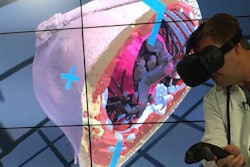The world has changed since the days when cardiac morphology training relied on cadaver specimens. Specimens are not only hard to obtain, but they rarely cover the full spectrum of disease. This session features 3D-printed heart models from CT and MR angiography of patients with heart disease. The 15-minute introductory lecture will be followed by a 60-minute hands-on period and a 15-minute discussion and evaluation.
"Using 3D printing technology, physical models can be fabricated from the living patients' imaging data," said presenter Dr. Shi-Joon Yoo, PhD, from the University of Toronto.
Part 2 of the course (see Wednesday listings) will focus on the crisscross heart and related conditions.
"Both are challenging diagnoses where 3D understanding of complex morphology is crucial," he said. "By having the 3D-printed models of 12 representative cases in hand, the audience will have great opportunities for learning complex morphology of the two rare pathological entities."
The course will guide attendees through the conversion of DICOM images into 3D-printed models. By the end of the course, attendees will have a solid basic understanding of the principles of 3D printing and potential applications in their practices.



















